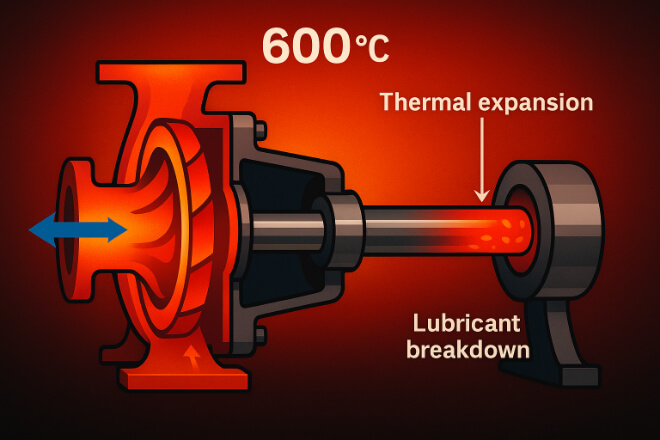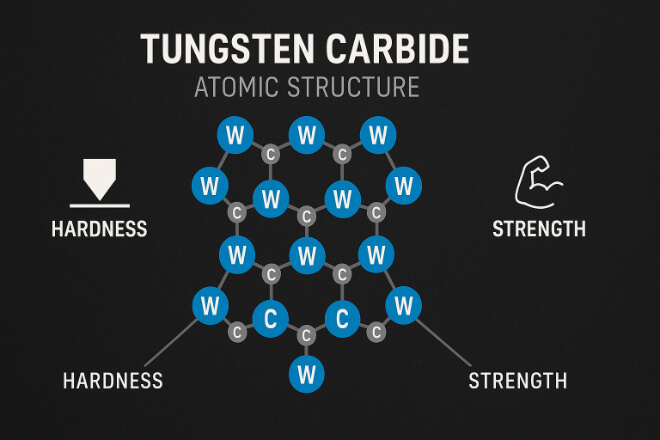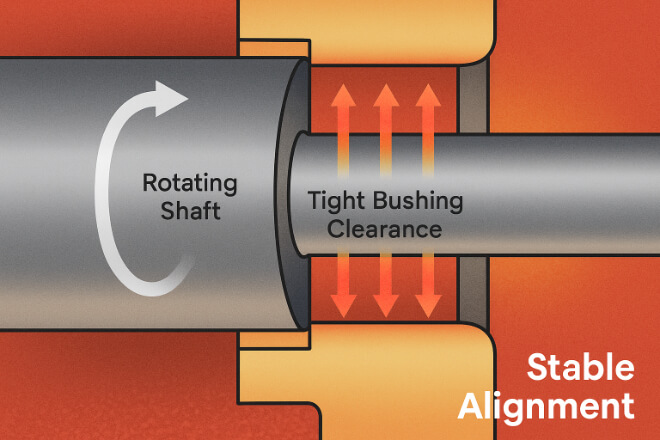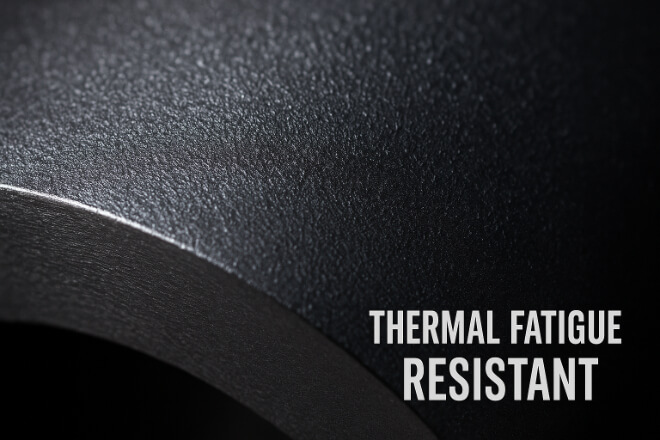Dans les opérations industrielles à haute température, les équipements sont soumis à des contraintes thermiques, à des frottements et à une usure extrêmes.
Les pompes, les compresseurs et les machines tournantes fonctionnent souvent à des températures élevées pendant de longues périodes, et même de petites faiblesses matérielles peuvent entraîner une défaillance.
bagues en carbure de tungstène font partie des rares composants capables de fonctionner de manière fiable dans de telles conditions.
Ils offrent une excellente stabilité thermique, dureté, et résistance à l'usure, ce qui les rend indispensables dans des environnements chauds comme les centrales électriques, les réacteurs chimiques et les systèmes métallurgiques.
Cet article explique le fonctionnement des bagues en carbure de tungstène dans les opérations à haute température, leurs avantages par rapport à d'autres matériaux, ainsi que les meilleures pratiques en matière de sélection et d'entretien.
Défis des opérations à haute température

Les environnements à haute température figurent parmi les conditions les plus exigeantes pour les systèmes mécaniques.
Lorsque les températures dépassent 300 °C (572 °F), les matériaux traditionnels perdent de leur résistance, se dilatent excessivement ou subissent une oxydation.
Problèmes courants :
Perte de dureté – Les métaux se ramollissent sous l'effet de la chaleur, ce qui entraîne une déformation.
Dilatation thermique – provoque un désalignement de l'arbre et une perte de jeu.
Dégradation du lubrifiant – entraîne un contact métal sur métal.
Oxydation et corrosion – la chaleur élevée accélère l'attaque chimique.
Dans les opérations continues telles que les systèmes de lubrification des turbines ou les pompes de raffinerie, ces problèmes entraînent des défaillances prématurées. Les bagues en carbure de tungstène offrent une solution stable et fiable.
Pourquoi le carbure de tungstène excelle à haute température

Le carbure de tungstène (WC) combine des particules de tungstène et un liant métallique (généralement du cobalt ou du nickel).
Cette structure lui confère des propriétés mécaniques exceptionnelles, même à haute température.
Propriétés clés :
Dureté jusqu'à 92 HRA maintenue à haute température.
Point de fusion supérieur à 2800°C (5070°F).
Faible dilatation thermique (~4,5 × 10⁻⁶ /K) pour la stabilité dimensionnelle.
Résistance à la compression > 4000 MPa.
Résistance à la fatigue thermique et résistance à l'oxydation.
Ces caractéristiques rendent les bagues en carbure de tungstène fiables pour un service continu à charge élevée et à haute température.
Comparaison avec d'autres matériaux de bagues
| Matériel | Température de fonctionnement maximale (°C) | Rétention de dureté | Dilatation thermique | Résistance à la corrosion |
|---|---|---|---|---|
| Bronze | 250 | Faible | Haut | Modéré |
| Acier inoxydable | 400 | Moyen | Moyen | Bien |
| Carbure de tungstène | 800+ | Excellent | Faible | Excellent (liant Ni) |
Comme indiqué ci-dessus, le carbure de tungstène conserve des performances supérieures là où d'autres matériaux commencent à flancher.
Cela le rend idéal pour les pompes, les compresseurs et les machines tournantes utilisées dans des applications à haute température.
Applications dans les industries à haute température
| Industrie | Plage de températures de fonctionnement | Équipement typique |
|---|---|---|
| Production d'énergie | 300–700 °C | Pompes à turbine, pompes d'alimentation de chaudière |
| Pétrochimie et raffinage | 200–600 °C | Pompes de circulation d'huile chaude, compresseurs |
| Métallurgie | 400–900 °C | Ventilateurs de four, entraînements de laminoir |
| Traitement chimique | 250–700 °C | Pompes de circulation de catalyseur, réacteurs |
Dans tous ces secteurs industriels, les bagues en carbure de tungstène maintiennent des jeux réduits et un fonctionnement stable, même lorsque les lubrifiants s'évaporent ou que le système subit des cycles de dilatation et de refroidissement thermiques.
Choix du liant et son effet sur les performances
| Type de liant | Température maximale (°C) | Stabilité thermique | Résistance à la corrosion | Applications |
|---|---|---|---|---|
| Cobalt (Co) | 700 | Bien | Modéré | Pompes et turbines à haute contrainte |
| Nickel (Ni) | 800+ | Excellent | Excellent | Huile chaude, vapeur, milieux corrosifs |
Le carbure de tungstène lié au nickel est idéal pour les environnements à haute température et en présence de produits chimiques corrosifs, tandis que les qualités liées au cobalt sont meilleures pour les systèmes soumis à des chocs ou à des impacts.
Stabilité dimensionnelle et résistance mécanique

À haute température, il est essentiel de maintenir le bon jeu entre les pièces en rotation.
Le faible coefficient de dilatation du carbure de tungstène contribue à prévenir la déformation et le grippage de l'arbre.
Même à 600 °C, il conserve une résistance à la compression quasi totale, évitant toute déformation ou fissuration.
Cette stabilité assure une rotation fluide, une répartition équilibrée de la charge et une usure réduite des composants en contact.
Résistance à la lubrification et à la fatigue thermique

Les lubrifiants perdent souvent de leur viscosité ou brûlent à haute température, laissant les composants sans protection.
bagues en carbure de tungstène sont capables de fonctionner dans des conditions sèches ou peu lubrifiées, grâce à leur finition lisse et dureté.
Elles résistent également à la fatigue thermique, une cause fréquente de fissuration des bagues conventionnelles. Cette propriété permet d'allonger les intervalles d'entretien et de réduire les interventions imprévues.
Exemple concret
| Industrie | Matériel ancien | Durée de vie (avant) | Durée de vie (après WC) | Réduction des temps d'arrêt |
|---|---|---|---|---|
| Pompe pétrochimique | Acier inoxydable | 10 mois | 3 ans | ~70% |
| Pompe à turbine de centrale électrique | Bronze | 8 mois | 4 ans | ~80% |
Les résultats montrent clairement que les bagues en carbure de tungstène peuvent tripler ou quadrupler la durée de vie des machines à haute température, offrant un retour sur investissement mesurable.
Conclusion
Les environnements industriels à haute température exigent des matériaux capables de résister aux contraintes, à la chaleur et à l'usure sans défaillance.
Les bagues en carbure de tungstène offrent une durabilité, une stabilité dimensionnelle et une résistance à la corrosion inégalées, ce qui en fait le meilleur choix pour les pompes, les compresseurs et les ensembles rotatifs exposés à une chaleur extrême.
Pour les décideurs des secteurs de l'énergie, de la chimie ou de la métallurgie, l'adoption de bagues en carbure de tungstène se traduit par une disponibilité accrue, une maintenance réduite et une fiabilité supérieure des équipements.
Si vous souhaitez en savoir plus sur une entreprise, n'hésitez pas à Contactez-nous.
